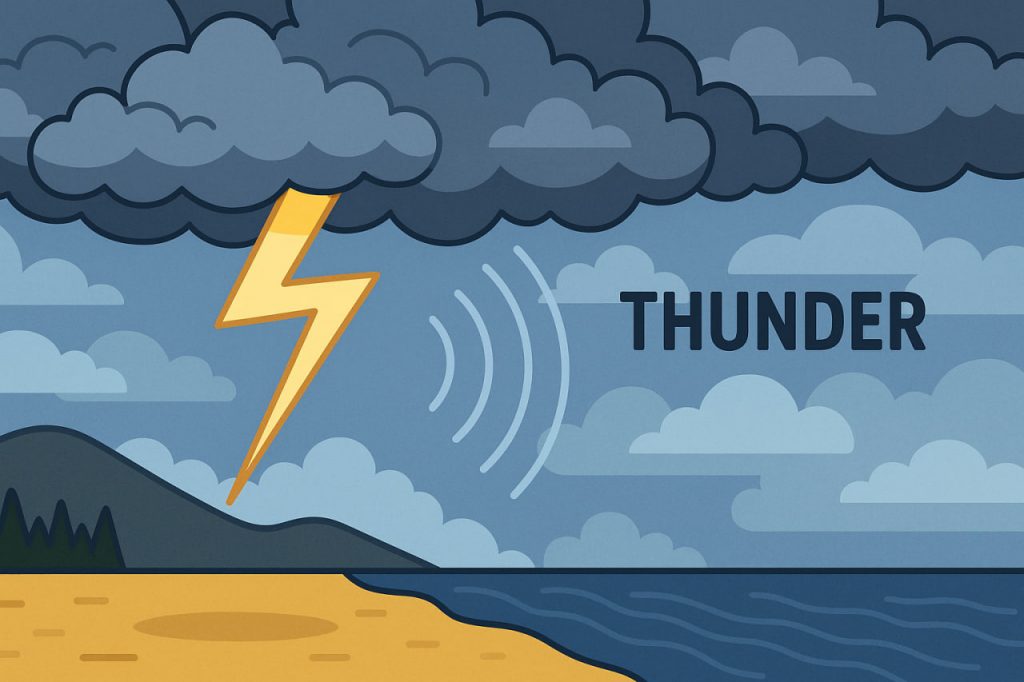Thunder and lightning are atmospheric phenomena that develop inside large storm clouds, known as cumulonimbus clouds. These clouds form when warm, moist air rises rapidly and cools, creating towering cloud structures that can reach up to 20 kilometers high.
Charge Separation in Clouds
Inside the thundercloud, collisions between ice crystals, water droplets, and hailstones cause an uneven distribution of electric charges. Lighter ice particles tend to acquire positive charges and move upward, while heavier particles become negatively charged and sink toward the bottom of the cloud. This separation creates a powerful electric field.
How Lightning Is Generated
When the difference between positive and negative charges becomes too great, the electrical field overcomes the insulating property of air. A sudden discharge of electricity occurs, known as lightning. Lightning can happen within a cloud, between clouds, or between the cloud and the ground.
The Path of Lightning
Before the main flash, small invisible channels called leaders form in the air. Once one of these leaders connects to an opposite charge — for example, from the ground — a brilliant bolt of lightning travels along the path at incredible speed.
How Thunder Is Produced
Thunder is the sound created by lightning. The bolt heats the air to temperatures hotter than the surface of the Sun, causing the air to expand explosively. This rapid expansion generates a shockwave that we hear as thunder. Because sound travels slower than light, we see the flash before hearing the boom.
Different Types of Lightning
There are several forms of lightning:
- Cloud-to-ground lightning – the most dangerous type, striking the Earth directly.
- Cloud-to-cloud lightning – discharges between clouds.
- Intra-cloud lightning – occurs within a single cloud and is the most common.
- Ball lightning – a rare and mysterious glowing sphere sometimes reported during storms.
Conclusion
Thunder and lightning are dramatic results of charge separation in storm clouds. Lightning is the discharge of electrical energy, while thunder is the sound of superheated air expanding. Together, they demonstrate the power and complexity of Earth’s atmosphere.
Glossary
- Cumulonimbus cloud – a massive storm cloud that produces thunderstorms.
- Charge separation – the division of positive and negative charges within a cloud.
- Lightning – a sudden discharge of electricity in the atmosphere.
- Leader – an initial path of ionized air that guides lightning.
- Thunder – sound caused by rapidly expanding air after a lightning strike.
- Ball lightning – a rare form of luminous spherical lightning.


